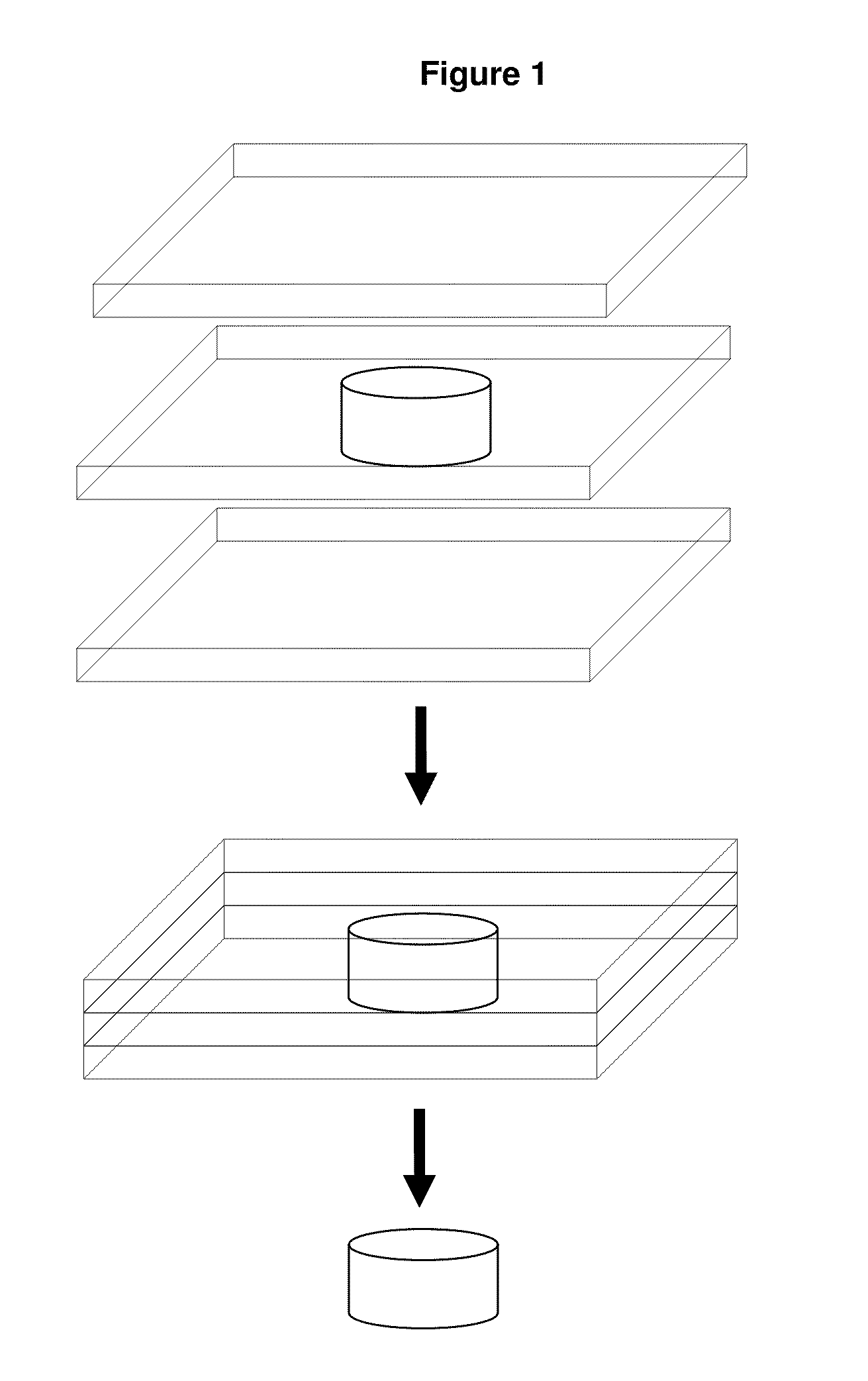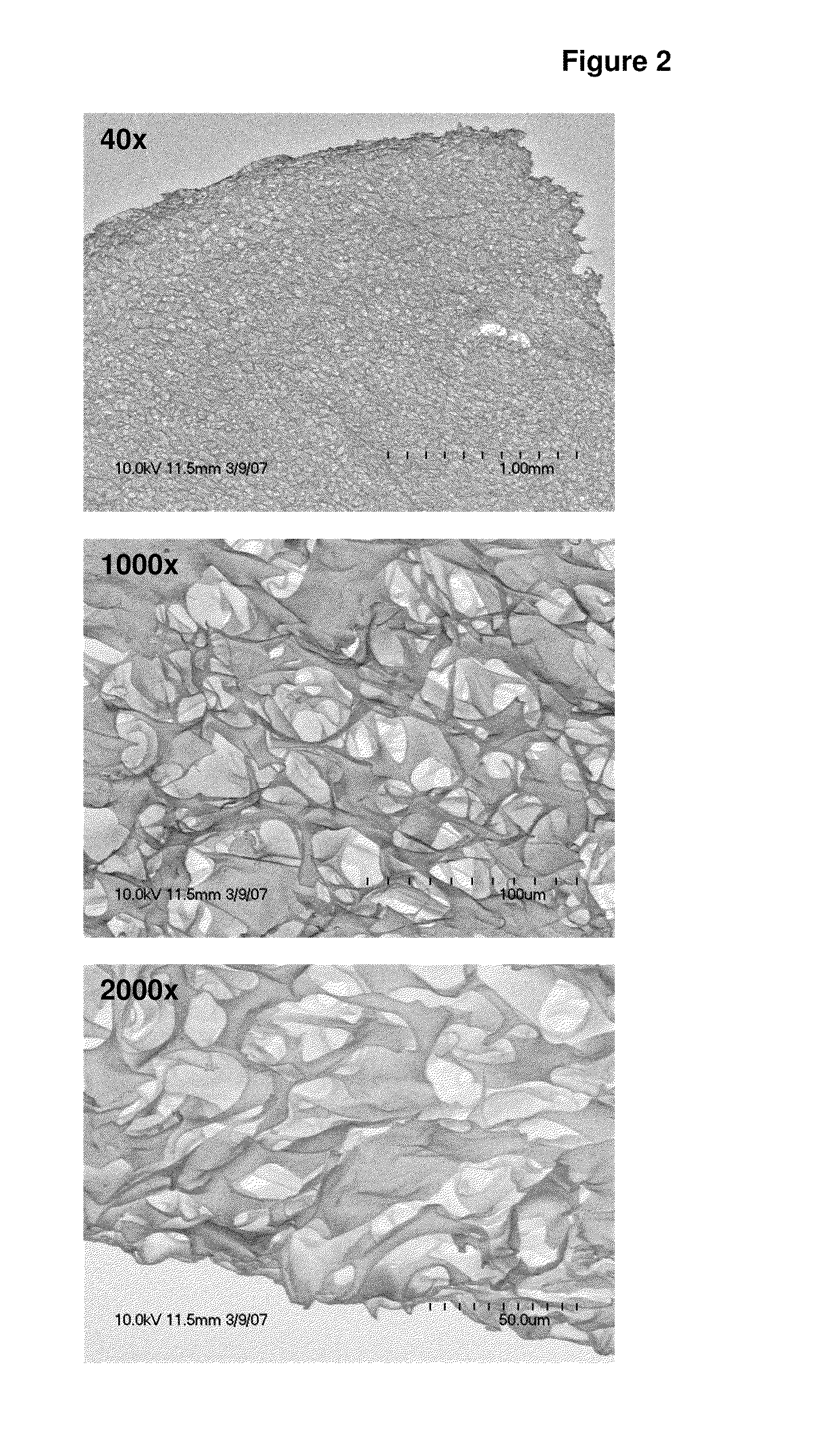Uses of immunologically modified scaffold for tissue prevascularization cell transplantation
a tissue prevascularization and cell technology, applied in the direction of antibody medical ingredients, prosthesis, peptide/protein ingredients, etc., can solve the problems of limited clinical application, no significant immunogenic properties, and modest beneficial effects on cardiac function, so as to improve cell engraftment and survival
- Summary
- Abstract
- Description
- Claims
- Application Information
AI Technical Summary
Benefits of technology
Problems solved by technology
Method used
Image
Examples
example 1
RGD-Modified Poly-Mannuronic Acid Substrate For Cell Transplantation
[0047]Alginate is the descriptive name for polysaccharides that can be derived from several species of seaweed, including the giant kelp Macrocystis pyrifera, Ascophyllum nodosum and various types of Laminaria. It is composed of poly-mannuronic or poly-guluronic acid. Poly-mannuronic acid chains have a linear structure, while poly-guluronic acid chains are buckled. In one embodiment of the present invention, alginate will refer to alginate purified according to the method disclosed above.
[0048]Alginate is soluble in water and solidifies in the presence of calcium ions. It is biodegradable, non-toxic and in solid form does not provide mammalian cell adhesion motifs. It can be injected as a liquid or implanted as a 3D scaffold. The carboxyl groups of each mannuronic acid monomer can be modified by attachment of amino groups found on proteins using covalent alginate-protein / peptide coupling chemistry.
[0049]Raw alginate...
example 2
Three-Dimensional RGD Peptide Modified Alginate Scaffold Seeded with Cells for Cardiac Repair Following Myocardial Infarction
[0062]Stem cells can be directly injected into damaged heart tissue to generate new vessels and salvage myocardium (Martens et al., 2006). For example, intra-myocardial injection of human bone marrow derived mesenchymal precursor cells (hMPCs) positive for the mesenchymal stem cell marker Stro-1 has previously been shown to induce angiogenesis in ischemic rat myocardium, resulting in global improvement of myocardial function. However, in humans, placebo controlled trials using autologous whole bone marrow cell therapy for acute myocardial infarction have yielded mixed results with either little or no beneficial effects (Schachinger et al., 2006; Lunde et al., 2006). The cause of this discrepancy is unclear and might lie in the lack of retention (Teng et al., 2006) or survival of transplanted cells. Indeed, in animal studies, only 0.1% live cells could be detec...
experiment 1
[0068]Scaffold preparation. For alginate purification, low molecular weight alginate (Sigma 0682) composed primarily of 1,4-poly-mannuronic acid at a concentration of 1.5% in 10 mM phosphate buffer, pH 5.5 at 20 degrees celcius in ddH2O was dissolved and treated with neutral carbon 1.5% for 24 h at 50 degrees celcius, filtered through glass pre-filters and treated with active carbon 1.5% for 24 h at 50 degrees celcius and filtered through glass pre-filters. After glass pre-filter filtration, the solution was kept at 4 degrees Celcius for 24 hours. Subsequently, the solution was filtered through hydrophobic Immobilon P membranes (50 ml per membrane in 90 mm Buchner funnel). After purification, Pierce micro BCA was used to determine the presence of protein. Qubit (Invitrogen) was used for DNA or RNA determination. Endotoxin presence was determined by using the Pyrosate kit (Cape Cod).
[0069]Using carbodiimide chemistry (EDC and sulfo-NHS in MES buffer, Pierce), linear or cyclic RGD pep...
PUM
| Property | Measurement | Unit |
|---|---|---|
| pH | aaaaa | aaaaa |
| sizes | aaaaa | aaaaa |
| size | aaaaa | aaaaa |
Abstract
Description
Claims
Application Information
 Login to View More
Login to View More - R&D
- Intellectual Property
- Life Sciences
- Materials
- Tech Scout
- Unparalleled Data Quality
- Higher Quality Content
- 60% Fewer Hallucinations
Browse by: Latest US Patents, China's latest patents, Technical Efficacy Thesaurus, Application Domain, Technology Topic, Popular Technical Reports.
© 2025 PatSnap. All rights reserved.Legal|Privacy policy|Modern Slavery Act Transparency Statement|Sitemap|About US| Contact US: help@patsnap.com



